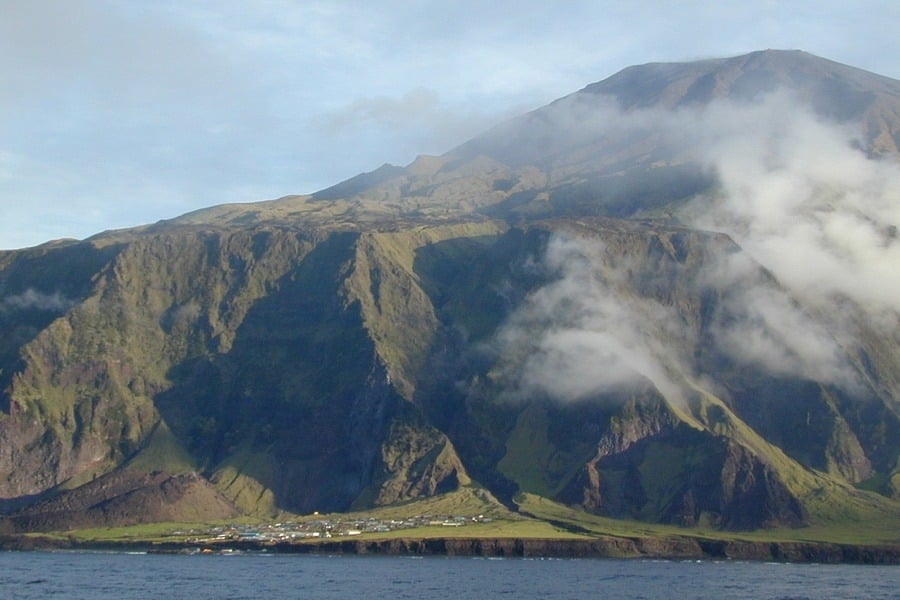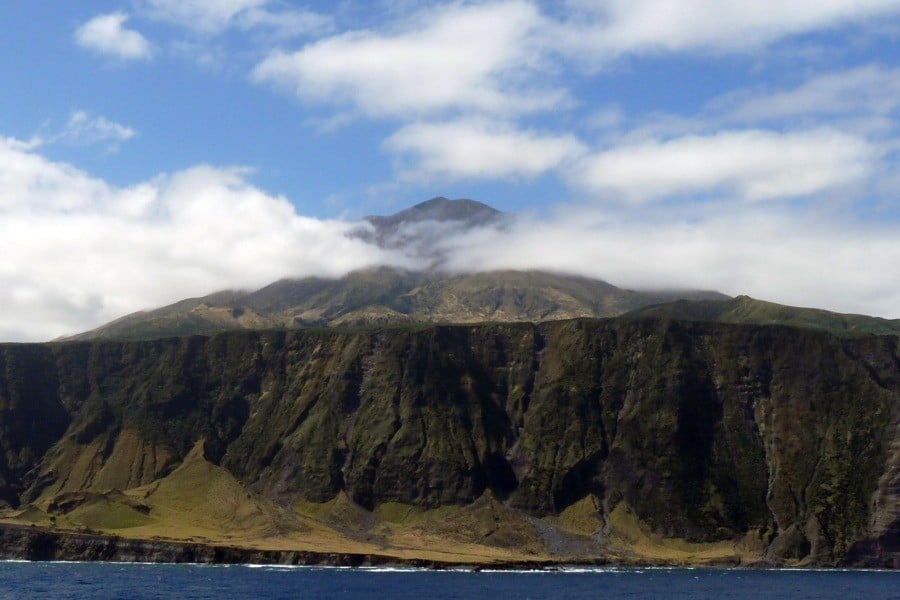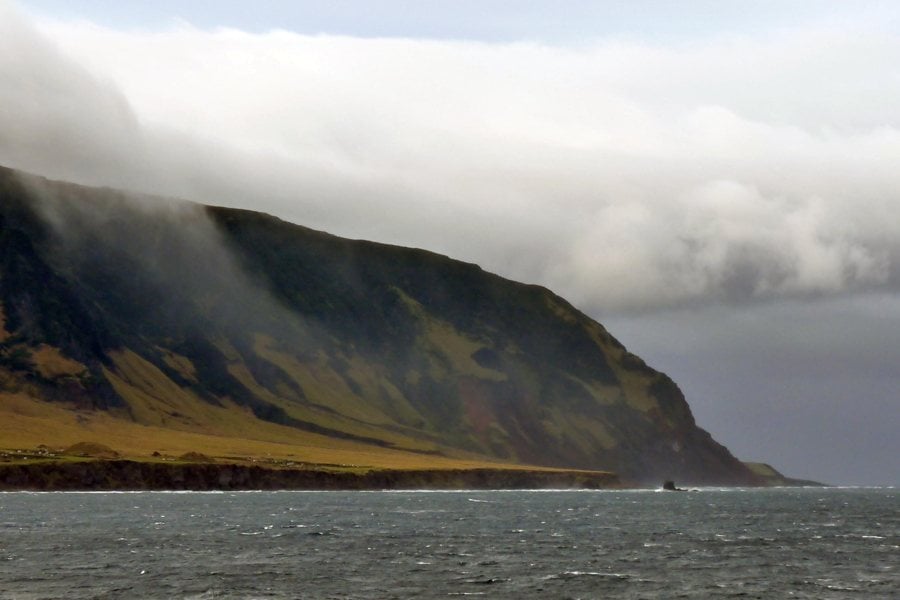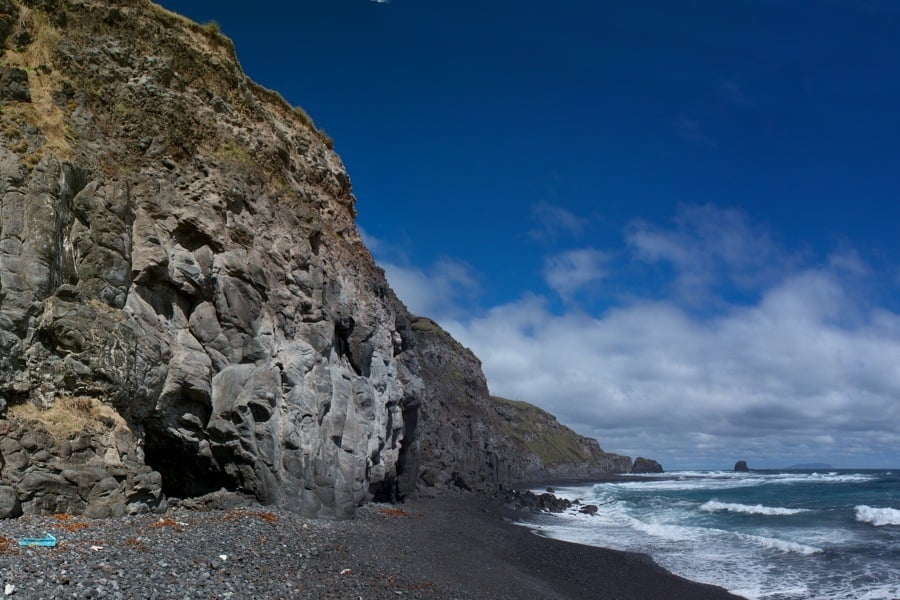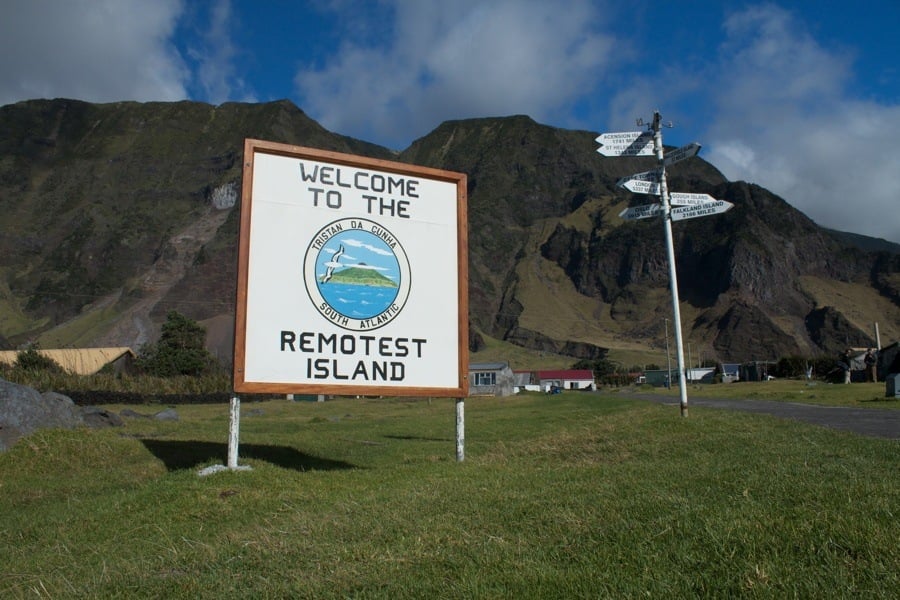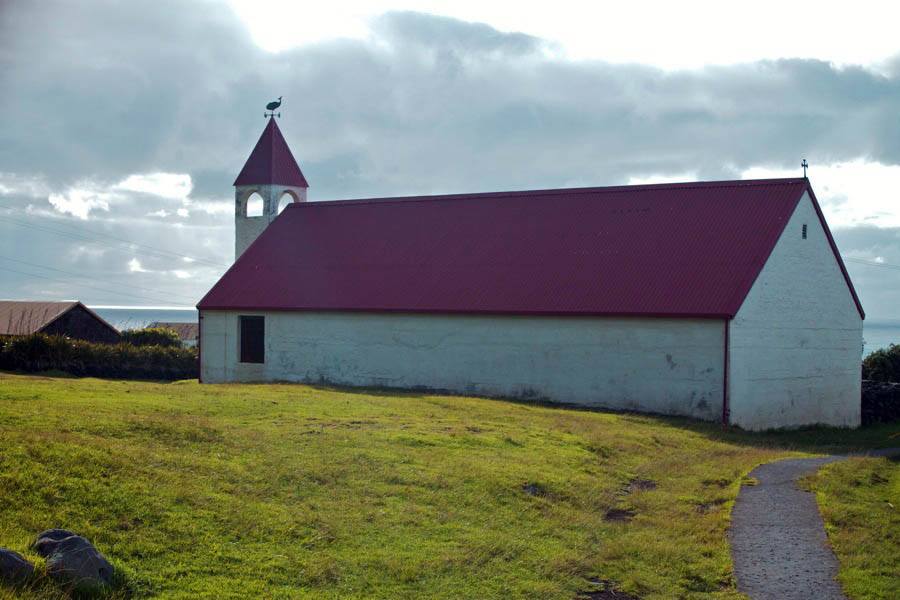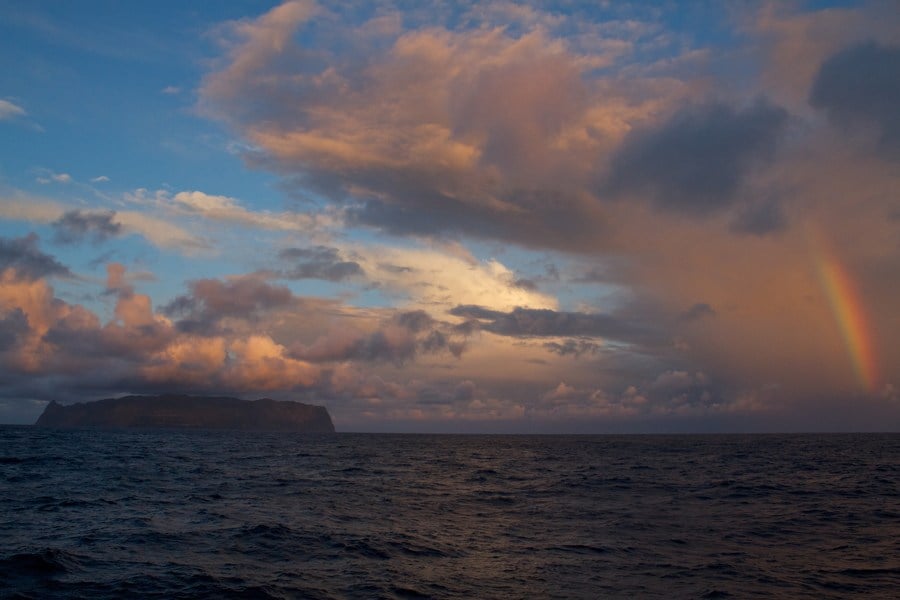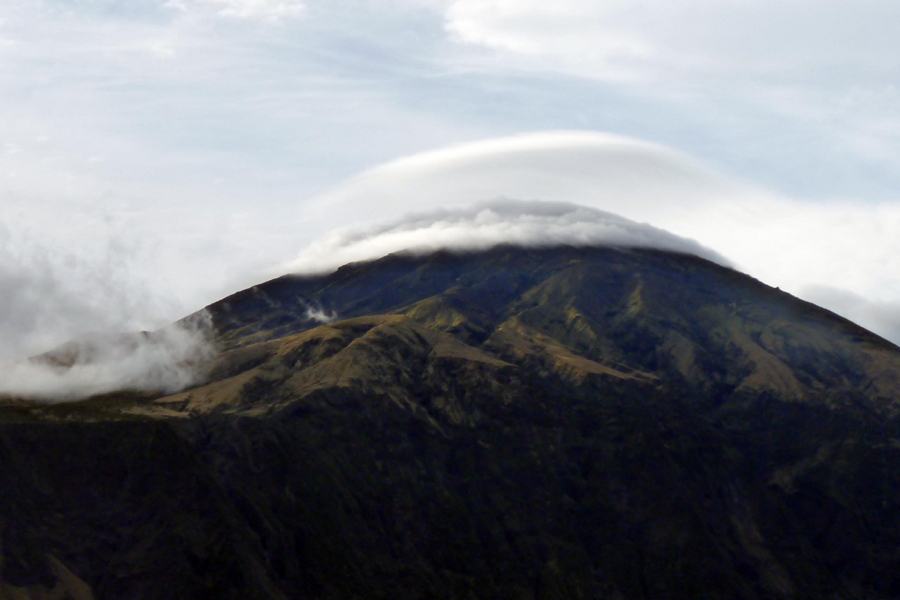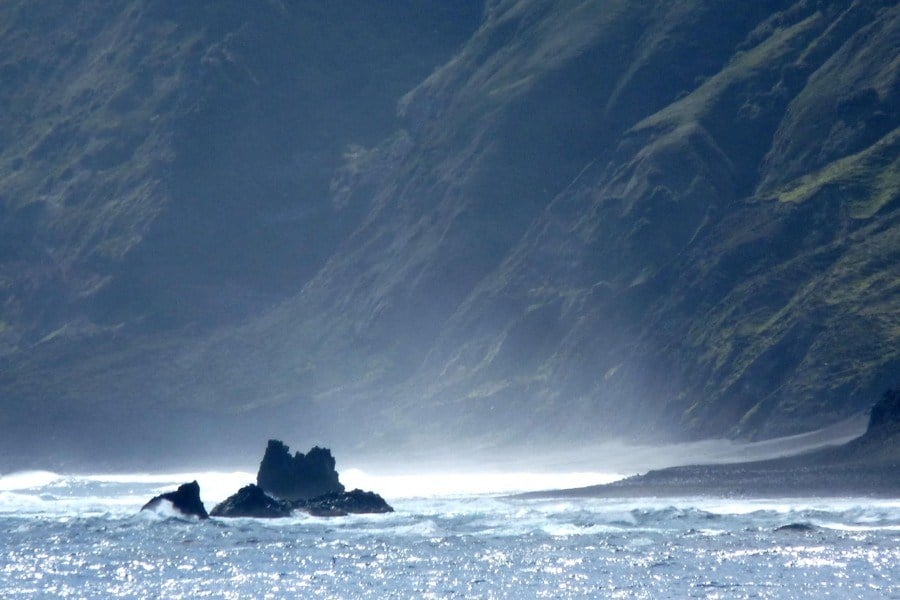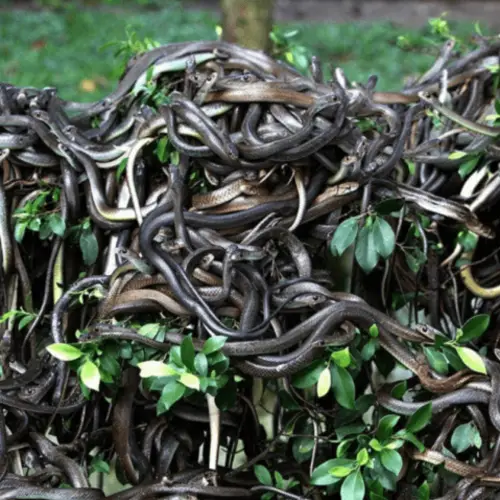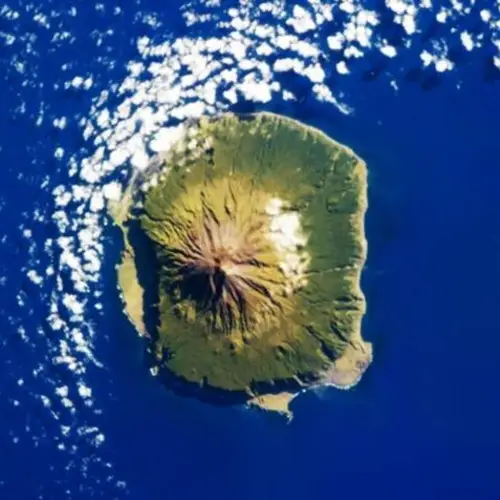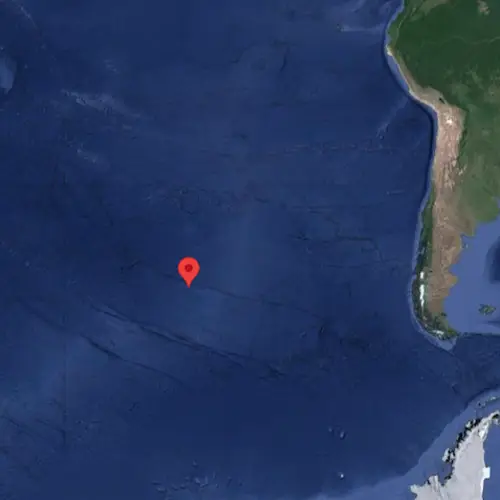Located in the middle of the South Atlantic Ocean, Tristan da Cunha is 1,600 miles from the nearest continental landmass and can only be reached by a six-day ship journey — but the island has been home to a small group of residents since the early 1800s.
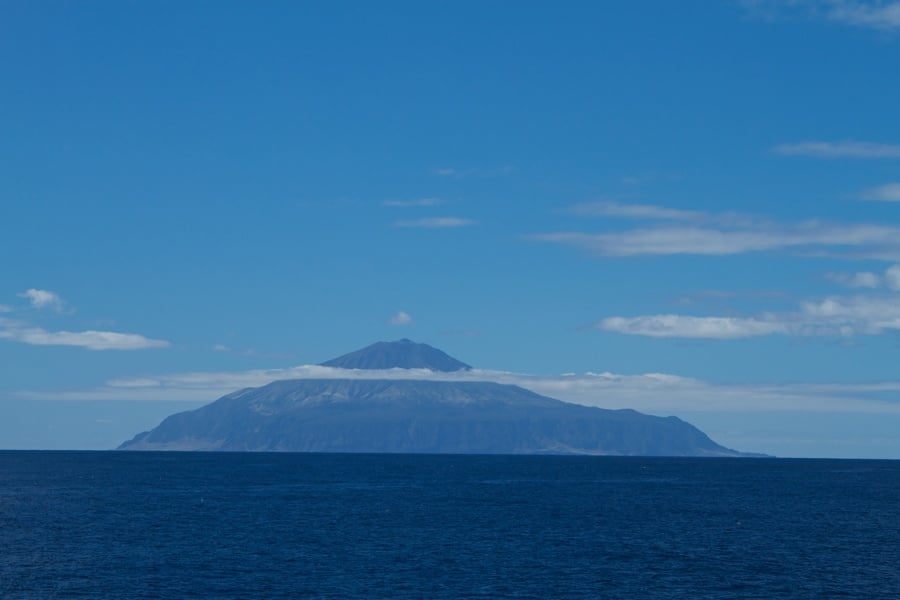
Brian Gratwicke/FlickrTristan da Cunha island, home of Edinburgh of the Seven Seas, the most remote settlement on Earth.
Traveling through the seemingly endless expanse that is the South Atlantic Ocean — 1,500 miles from the nearest inhabited island and more than 1,600 miles from the nearest continental land, South Africa — you’ll eventually come upon the crest of a small volcanic island: Tristan da Cunha.
Its emerald green landscape is speckled by an assortment of homes and buildings, an unexpected glimpse of civilization amidst otherwise lonely surroundings. The island holds just one settlement, Edinburgh of the Seven Seas, the most isolated town on Earth. Tristan da Cunha is the largest landmass in an island group of the same name and the only one that’s inhabited.
The island is a testament to humanity’s resilience. The British Overseas Territory was first permanently settled in the early 19th century, and many of its current residents are descendants of the original men who decided to call its isolated shores home.
Today, around 250 people live on Tristan da Cunha. Their neighbors are blue sharks, fur seals, rockhopper penguins, and rare birds that aren’t found anywhere else in the world. And they wouldn’t have it any other way.
How Do You Get To The Most Remote Settlement On Earth?
The first question most people have when they hear about the most isolated settlement on Earth is simple: How do you get there?
Tristan da Cunha is located more than 1,600 miles west of South Africa and 2,300 miles east of Uruguay. The next closest inhabited island is Saint Helena, approximately 1,500 miles to the north.
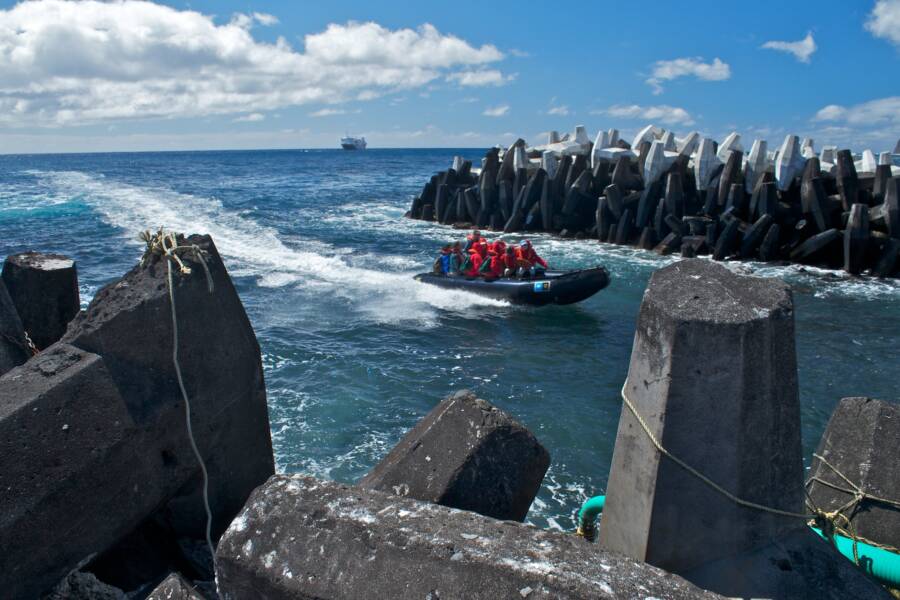
Brian Gratwicke/FlickrA tour group arrives at Tristan da Cunha by boat.
As such, the only way to reach Tristan da Cunha is by a six-day ship journey. There are no regular passenger ferries to Edinburgh of the Seven Seas, but anyone who wants to visit can board one of the fishing, mail, expedition, or research vessels that make frequent trips to the island group.
"Trips to the most isolated community in the world need to be well planned," reads the official website of Tristan da Cunha. "Many would-be visitors have sailed to Tristan, but failed to land."
Even if someone manages to secure transportation to the island, they still need to receive permission to visit from the local government. Due to strict wildlife protections, tourism is tightly controlled.
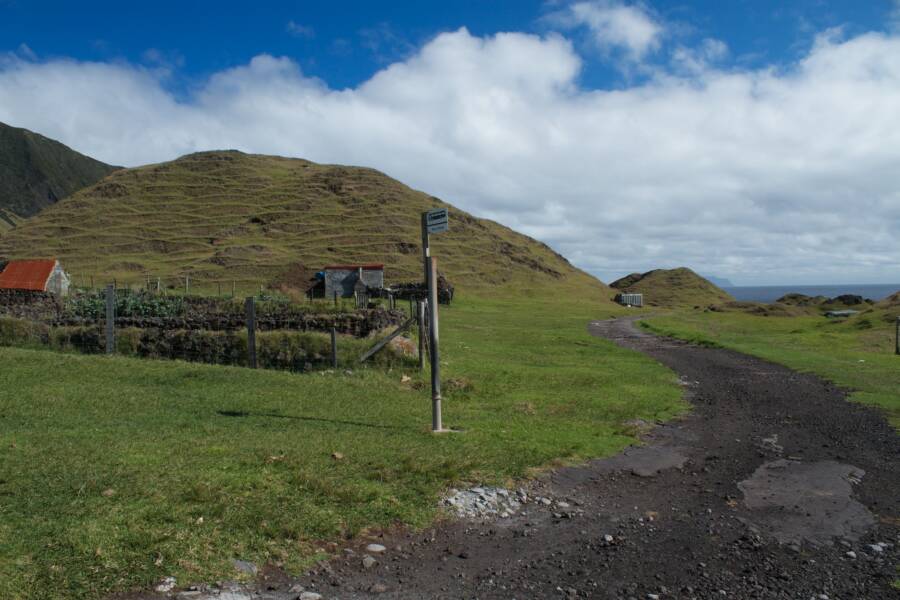
Brian Gratwicke/FlickrA bus stop along the only road on the island.
So, how did anyone ever discover such an isolated group of islands? And why do people choose to live there at all?
Europeans Discover The Island Of Tristan Da Cunha
Portuguese explorer Tristão da Cunha originally discovered the archipelago of volcanic islands that contains Tristan da Cunha (along with five other smaller, uninhabited islands) in 1506, and he promptly named them after himself.
The island group was explored several times by the Dutch during the 17th century, and a French crew carried out the first full survey of the archipelago in 1767. However, it wasn't until the early 1800s that American whaling vessels took an interest in Tristan da Cunha. A trio of American men attempted to establish a colony and trading post on the island, though their plan flopped after a fishing accident sent two of them to the ocean's depths.
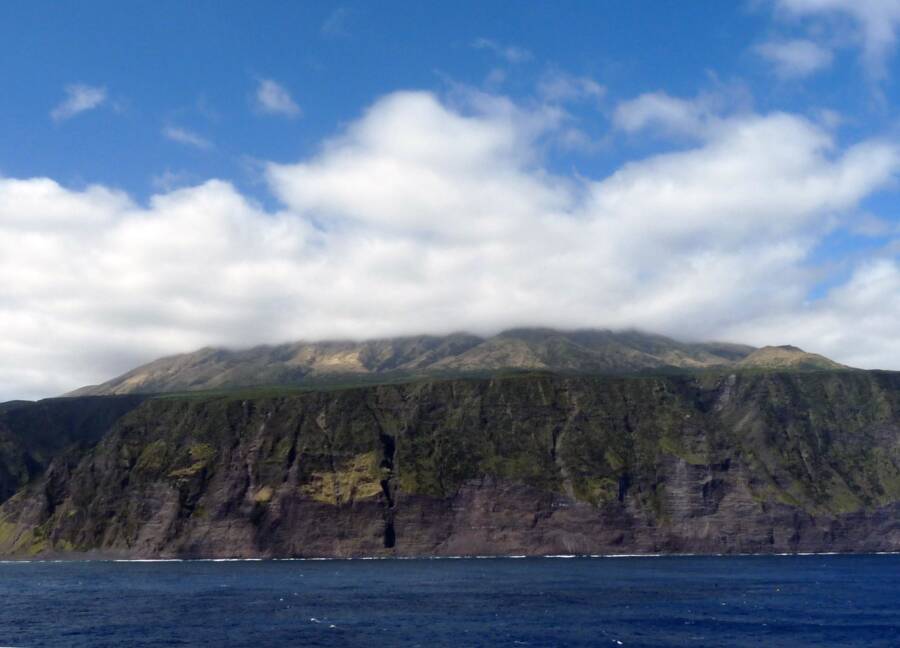
michael clarke/FlickrThe west coast of Tristan da Cunha.
In 1816, the British seized Tristan da Cunha out of concern that the French might use the island to help free Napoleon, who was imprisoned on Saint Helena 1,500 miles to the north. The original garrison of troops left in November 1817, but a few men decided to stay behind.
From there, the island's population began to flourish, whalers set up shop, and Tristan da Cunha started to look more and more like an actual civilization.
Still, life on Tristan da Cunha wasn't without its hardships. The population was inconsistent, with settlers coming and going with the tides. At one point, the island was home to a mere four families. As the whaling industry declined and the Suez Canal opened in 1869, fewer and fewer ships passed by, and the isolation began to take its toll on the island.
World Wars And The Era Of Troubles On The South Atlantic Island
In the late 19th century, Tristan da Cunha endured further adversity. First, sailors committed insurance fraud by purposely beaching their ships on the island, and black rats began streaming out of the hulls, negatively impacting the already scant agricultural prospects as well as the local wildlife.
In 1867, Queen Victoria's son, Prince Alfred, the Duke of Edinburgh, paid a visit to the small settlement on Tristan da Cunha and dubbed it Edinburgh of the Seven Seas, though most locals never came to accept the name.
Neither did the island's residents accept defeat. The residents of Tristan da Cunha instead became efficient hunters and gatherers, with eggs and meat from indigenous birds (albatrosses, penguins, and shearwaters, just to name a few) helping to supplement the lack of farming and trade, again proving the resilience of the island's people.
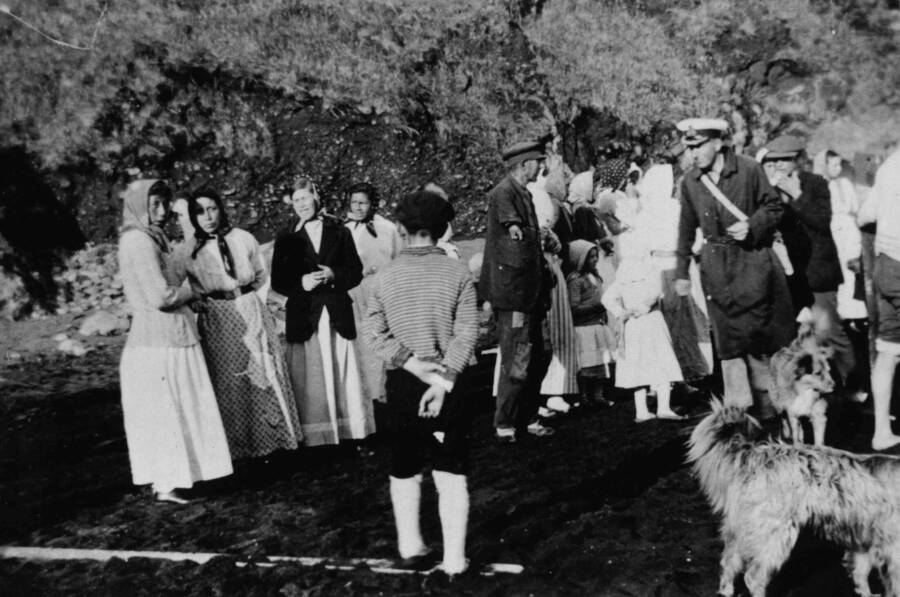
SuperStock / Alamy Stock PhotoResidents of Edinburgh of the Seven Seas excitedly greet the first ship to visit the island in two-and-a-half years. 1948.
Nevertheless, isolation on Tristan da Cunha hit its peak during World War I, when it's said that the island didn't receive a single letter over the course of nearly 10 years. Earth's most remote civilization had no contact with the outside world until the news that the Great War had started — and ended — reached its shores in 1919.
During World War II, the Royal Navy established a secret station on the island to monitor German U-boats, which had been spotted in nearby waters. The settlement's infrastructure developed significantly during this time as a school, hospital, store, and crawfish canning factory were built.
In October 1961, Queen Mary's Peak, the volcano on Tristan da Cunha, suddenly erupted. The island's 264 inhabitants evacuated by boat to nearby Nightingale Island and were later discovered by a Dutch ship that carried them to Cape Town. Luckily, Edinburgh of the Seven Seas was still safe for habitation, and most residents had returned by 1963. Today, Tristan da Cunha is home to roughly 250 people — and a wide variety of wildlife.
Wildlife Protection On Tristan Da Cunha
Tristan da Cunha hosts a unique array of flora and fauna, much of which is found nowhere else on Earth. The island is home to the Tristan albatross, a massive bird with a wingspan reaching up to 10 feet. These rare birds spend most of their lives soaring over the South Atlantic, returning to Tristan da Cunha to breed.
The island group is also home to the Inaccessible Island rail, the world's smallest flightless bird, as well as six other endemic avian species and hundreds of thousands of rockhopper penguins.
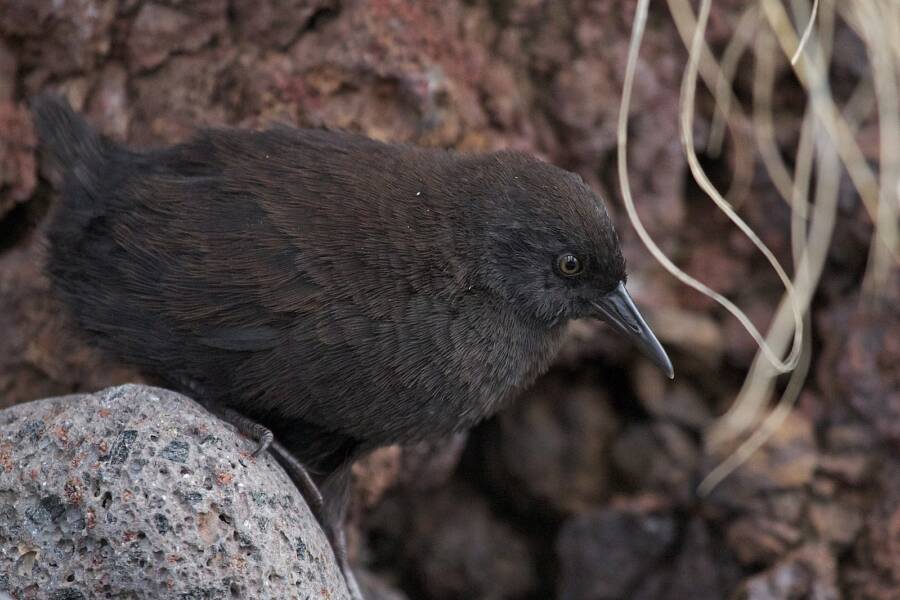
Brian Gratwicke/FlickrThe Inaccessible Island rail is endemic to the Tristan da Cunha island group.
Blue sharks, which are heavily hunted for their prized fins, seem to have found refuge in the waters surrounding Tristan da Cunha. In 2017, the National Geographic Pristine Seas initiative partnered with the Royal Society for the Protection of Birds to launch an expedition to the island group. According to the National Geographic Society, "The team saw more blue sharks here than in any other location they've sampled."
This level of biodiversity is possible due to Tristan da Cunha's isolation from the outside world — and the island's residents hope to keep it that way.
After learning about Tristan da Cunha, read about more of the most remote places on Earth. Then, discover four tiny islands you'll never be able to visit.
